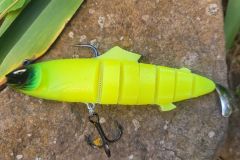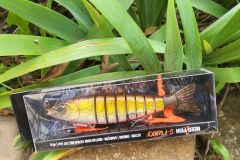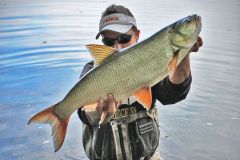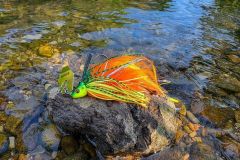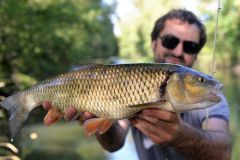The desire to write about this subject follows a particular event that took place near my home. A local AAPPMA, with the aim of gathering and cohabitation between the old and the new generation of fishermen, had the commendable idea to organize on a lake, a small competition of fishing for carnivorous fishes in No Kill open to lures and to live fishing. If we pass over the debate concerning the possibility of fishing with livebait in No Kill - this one is indeed technically impossible since its existence is conditioned by the sacrifice of a fish used as bait - this honourable step was going to quickly show its limits when reading the rules of this competition. Indeed, it was stipulated that the captured fish had to find their element even if the livebait had been baited. It was then enough to cut the leader before putting the fish back in the water. We are then precisely in the very limited framework of the concept of No Kill.
The following article is only intended to inform and give advice on good practices. It has no moralizing scope, each fisherman being free to act as he wishes, in his soul and conscience. On the other hand, this article does not imply that it should be forbidden to catch or to practice live fishing (there are jigs with immediate hooking, for example) because that is not the subject. Let's get to the point.
The No Kill
The No Kill comes to us from England and arrived in France through the intermediary of the carpists.
No Kill literally means "do not kill". The fact of "not killing" is not only a behaviour that some French fishermen impose on themselves since it is also a regulatory provision that is imposed on them through catch limits, "No Kill" courses, competition regulations, etc.
The "No Kill" movement has long been associated with fishermen who fish excessively without the fisherman who practices it being able to claim to belong to a particular movement.
The Catch and Release
The Catch and Release has its origins in the United States and, like the English No Kill, has a strictly regulatory origin.

" No fish were killed or injured in the making of the film. The producers would like to point out that while the McLeans kept their catch as was common at the turn of the century, enlightened fishermen today advocate a "catch and release" policy to ensure that this priceless resource swims free to fight another day. Good fishing. "
When it arrived in France, the Catch and Release was in a way conceptualized by a certain fringe of French fishermen who made it a real state of mind and was never the expression of a regulation. This is the difference with No Kill.
No Kill can be considered as a concept that is limited to this act of gratification, while Catch and Release is a much broader concept that revolves around the idea that the fish must be returned to its element in the best possible conditions to ensure its survival. Catch and Release is about "taking care" of the fish. It is therefore a moral dimension that the fisherman imposes on himself, and not a legal or regulatory one. In this case, we can talk more about ethics and commitment.
Taking care of a fish isâeuros¦
Respect your biological rhythm...
And if necessary, question the regulations in place. Let's take the example of the national opening and closing dates for carnivore fishing which, historically, only consider and protect pike. Unfortunately, at the time of the recovery at the end of April, other species, such as zander and black bass, are reproducing. More and more efforts are made by regional federations to adapt the regulations to their region.
...and its physiology
We could take the example of fishing too deep which, in the case of pike-perch, does not allow to optimize the survival rate of the fish once they are back in the water since for these fish the gas exchange is done through the blood and requires a much longer process than if it was done directly through the esophagus as it is the case for pike for example. We can compare this to the stops that a diver is obliged to make to return to the surface but in the case of percids these stops should be much longer (several hours).
Correctly size your equipment
- depending on the target species
- according to the size of the fish sought
- according to the type of biotope fished
This is to shorten the fight to limit the production of lactic acid, but also to avoid as much as possible that a fish manages to take refuge in obstacles, which would potentially result in injury.
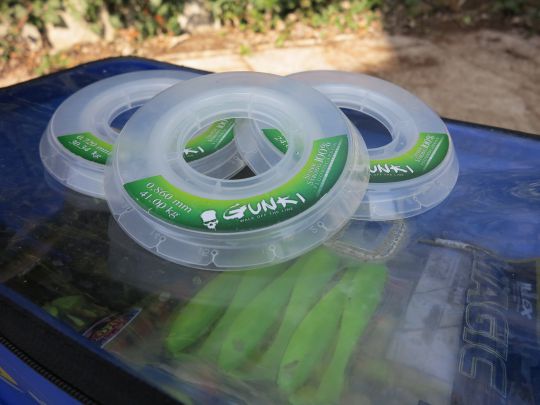
Handle it well
- Use a rubber mesh landing net adapted to the species fished
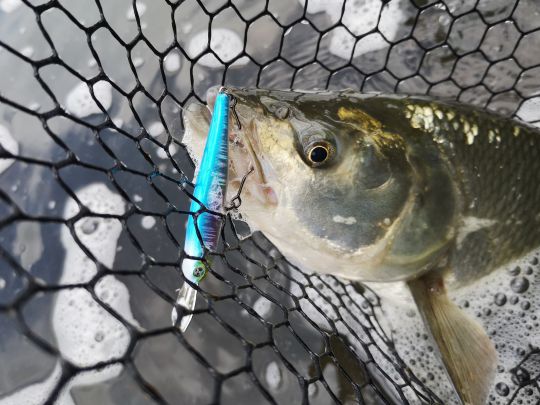
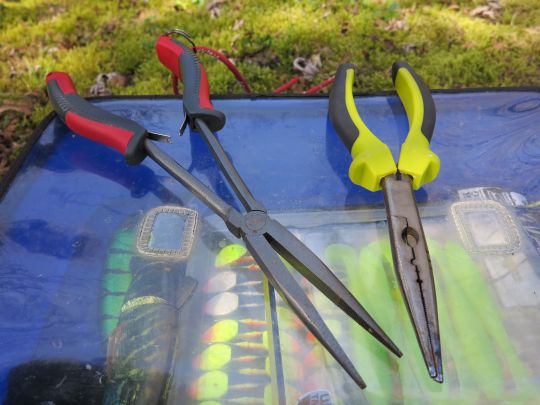
- Wet your hands before picking it up to preserve its mucus which acts as a barrier to external aggression

- Use a moistened landing mat whenever possible, especially when fishing from shore and unable to hold the fish in the landing net.
- Limit time out of the water to minimize stress.
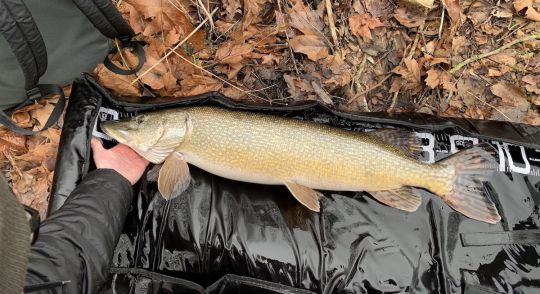
It is thus understood that these two concepts have in common the graciation of the fish but that they differ by their respective outlines. This difference is linked to the interpretation and conceptualization that the French fishermen have made after the arrival of these concepts in France.
While Catch and Release considers all the steps from the technique used to the release of the fish, No Kill is ultimately only the final step of Catch and Release, the release of the fish.
The United States, a textbook case
The state of fishing in the USA is not comparable to the situation in France.
The Americans have structured a strong economy around fishing and have sized it around a single fish: the black bass. The black bass is therefore the base of this economy. And for this economy to work, the Americans have understood that it was fundamental to maintain this base. The black bass is also part of the category of fish that they call "Game Fish", that is to say sport fish.

By way of comparison, our French "game fish", which are pike, perch, zander and trout, to name but a few, are precisely those that most commonly end up on our platesâ?¦
Even if the climatic conditions in the USA are very favorable to the development of this fish - black bass can reproduce several times a year - and that the density of fish is thus naturally consequent, the Americans take care that this available stock remains as stable as possible. For that, among other things, they have been practicing for a long time the Catch and Release, as specified at the beginning of the article.
Without wanting to constantly take example on the Americans, it is nevertheless interesting to wonder about the fact that if the Americans practice the Catch and Release while the resource is important in their country, it seems reasonable to do the same in France if we wish to ensure a future to our passion.
Acknowledgements and to go further
I would like to thank Numa Marengo in particular for the exchanges we had on this subject and for his knowledge which has greatly contributed to mine over the years.
Moreover, if you want to go further in your thinking, I can only strongly advise you to read Numa's book "Fishing and Plato" and to watch the Lives organized on his Facebook page Numa Fishing.






